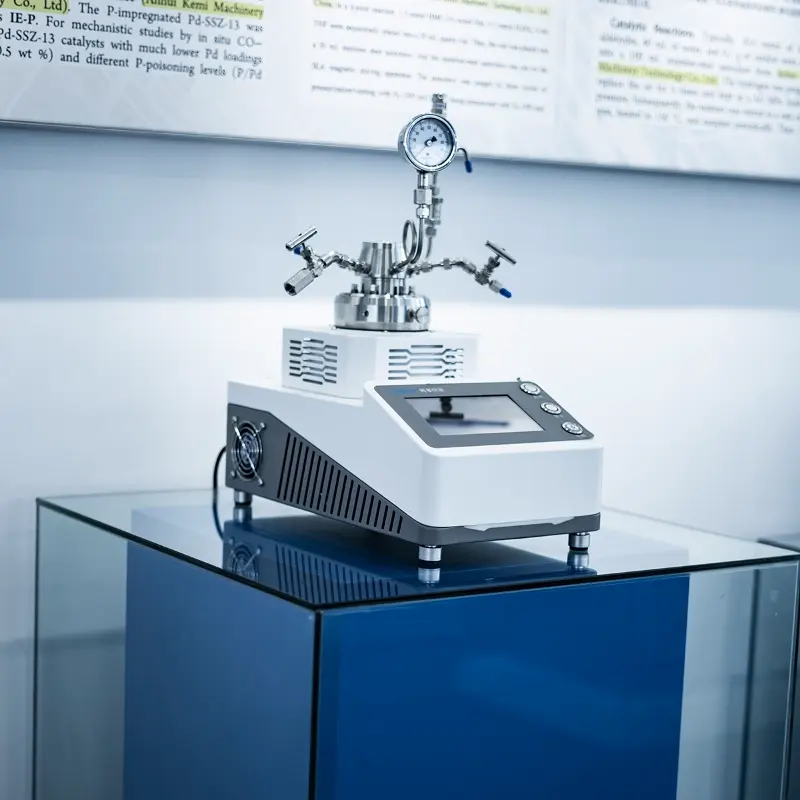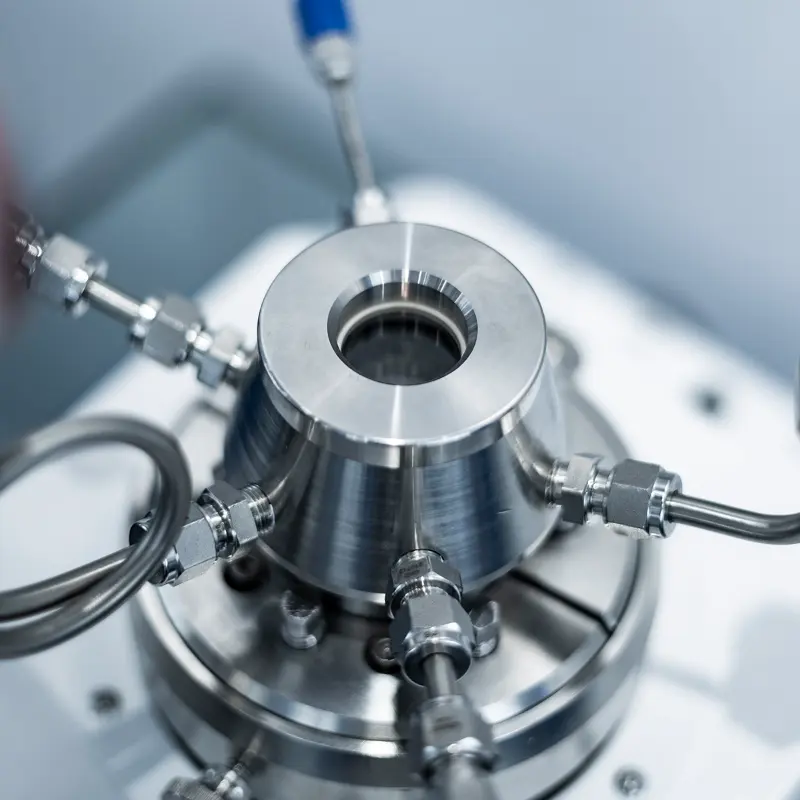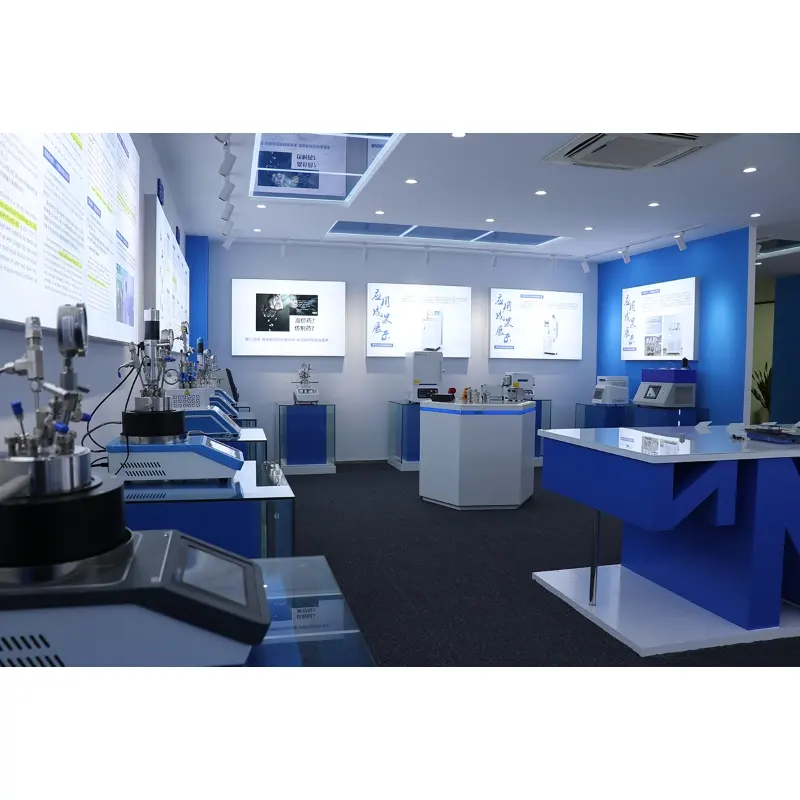The NVG photocatalytic magnetic reactor with display window is an efficient reaction device that integrates photocatalytic technology, magnetic control, and real-time monitoring functions. It has broad application prospects in environmental pollution control, energy conversion, and other fields, especially in water treatment, air purification, and photocatalytic water splitting for hydrogen production, where it offers significant technical advantages. Its unique design concept and advanced material selection make this type of reactor an indispensable part of modern catalytic technology research and industrial applications.
Photocatalysis is the core working principle of this reactor. Photocatalytic reactors typically rely on light-sensitive materials, such as titanium dioxide, graphene, etc. These materials can generate photogenerated electrons and holes when exposed to light of a specific wavelength. The photogenerated electrons and holes participate in redox reactions, thus driving the degradation of organic pollutants, wastewater purification, or energy conversion reactions. In traditional photocatalytic reactors, titanium dioxide, as a widely used catalyst, has good catalytic performance, but its light absorption range is mainly concentrated in the ultraviolet region. To overcome this limitation, the NVG photocatalytic magnetic reactor adopts nanomaterials like graphene, which not only have a wider light absorption range but also significantly enhance the electrical conductivity and transmission efficiency of electrons, thus accelerating the generation of electron-hole pairs and reaction speed. Graphene’s excellent conductivity can improve the electron conduction efficiency, reduce electron recombination, and thus enhance the reactor’s catalytic efficiency.
In terms of magnetic control, the NVG photocatalytic magnetic reactor incorporates magnetic nanoparticles, typically made of magnetic materials such as iron, cobalt, or nickel. These magnetic particles can precisely regulate the flow path of reactants under an external magnetic field, optimizing the contact between the catalyst and the reactants, thereby improving catalytic efficiency. Additionally, magnetic particles help in catalyst recovery. In traditional photocatalytic reactions, catalysts often get lost due to the movement of substances during the reaction, leading to reduced catalytic efficiency. The introduction of magnetic materials can separate the catalyst from the reaction liquid using an external magnetic field, reducing catalyst loss and enhancing its service life. This feature significantly improves the economic and environmental friendliness of the NVG photocatalytic magnetic reactor during continuous operation.
The display window, as an intelligent monitoring component of the reactor, provides real-time feedback to help operators precisely grasp dynamic changes in the reaction process. The display window is typically equipped with a series of sensors that can monitor key parameters inside the reactor in real-time, such as light intensity, reaction temperature, reactant concentration, pH value, etc. These data are presented through a visual interface, helping operators adjust reaction conditions in a timely manner to optimize reaction efficiency. For instance, changes in light intensity can affect the rate of the catalytic reaction, so the reactor adjusts based on real-time light data to ensure the reaction occurs under optimal light conditions. Monitoring temperature and pH helps ensure the reaction environment is ideal and prevents catalyst deactivation or reduced reaction efficiency due to excessive temperature or low pH.
The NVG photocatalytic magnetic reactor also considers the uniformity of light in the reaction zone and the precision of magnetic control. By adopting an efficient light source distribution system and optimized reflection design, the reactor ensures that light is evenly distributed across every part of the reaction zone, preventing uneven catalytic reactions caused by insufficient local illumination. At the same time, the precise arrangement of magnetic materials can effectively guide the flow of reactants in the reaction zone, improving the contact efficiency between the reactants and the catalyst, thus enhancing the overall catalytic performance.
This reactor not only significantly improves catalytic efficiency but also has strong adaptability and flexibility, making it suitable for various types of reaction systems. For example, in water treatment, the NVG photocatalytic magnetic reactor can degrade organic pollutants in water using photocatalytic technology, while removing harmful substances from the water and reducing catalyst loss through its magnetic recovery feature. In air purification, the reactor can use visible light to drive catalytic reactions that decompose harmful gases in the air, such as nitrogen oxides and volatile organic compounds. Furthermore, in the energy conversion field, especially in photocatalytic water splitting for hydrogen production, the NVG photocatalytic magnetic reactor, through efficient catalysts and magnetic control, is expected to significantly improve the efficiency of photocatalytic water splitting, promoting research and applications in green energy.
The NVG photocatalytic magnetic reactor with display screen demonstrates immense potential in improving catalytic efficiency, reducing catalyst consumption, and optimizing reaction conditions by combining advanced photocatalytic technology, magnetic control, and intelligent monitoring systems. It provides a new solution for environmental management and energy conversion and opens up new directions for future catalytic technology research, with wide application prospects.




